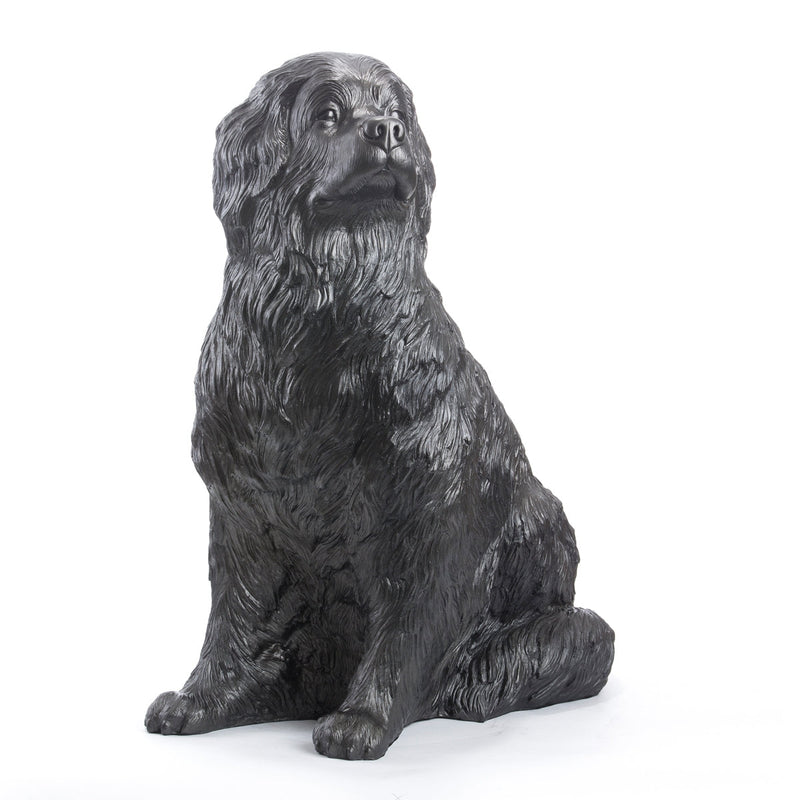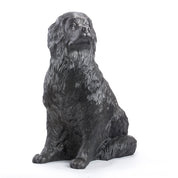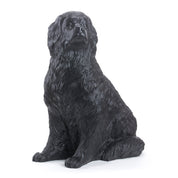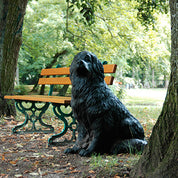Sculpture Russ, Wagner's dog - Ottmar Hörl
Artist: Ottmar Hörl
Brand: Ottmar Hörl
Colors: Black, Bronze
Material: Polyvinyl chloride
Dimensions: H 80 x D 40 x L 70 cm
Availability: Lead time 2 weeks
Learn more about the product
Available in different colors.
Available in a signed version limited to 191 copies per color.
For Ottmar Hörl, the artist Richard Wagner becomes visible here in his humanity through his relationship with animals. “The chroniclers have not succeeded,” says Ottmar Hörl, “in revealing the sympathetic character of Richard Wagner. For me, it's about making Wagner's person tangible beyond the cult of stars, taking him out of the artistic Olympus and making him accessible."
As a symbol of human sympathy and compassion, Wagner's dog refers to the kind person Richard Wagner, who, like any other person, is also part of an everyday social structure. Throughout his life, Richard Wagner was very close to nature. Walks and hikes were part of his inspiration to see the world in context. Dogs were his companions and part of his life. Wagner's close relationship with animals is documented from all periods of the artist's life - including correspondence with Minna Wagner, Mathilde Maier and Mathilde Wesendonk, as well as Cosima Wagner's diary entries. In a letter to Ernst von Weber in 1879, Wagner explicitly opposed the "torture chambers of science" and was thus one of the first opponents of animal experimentation. Ottmar Hörl chose a Newfoundland dog, one of Wagner's favorite dogs, as the artistic material for the sculptural work "Wagner's Dog". In a black plastic version about 70 cm high, around 800 dogs will be assigned to each bench in the Bayreuth city park for the duration of the exhibition.
Learn more about this artist
Ottmar Hörl, a multidisciplinary German artist, is internationally recognized for his avant-garde style and his daring to undertake colossal projects. Sculptures, serial sculpture installations, photographs and conceptual objects: its aim is to offer a type of art accessible to all, in particular to democratize sculpture by exhibiting gigantic and radical projects in public spaces.
Today, it is his garden gnome Ben, presented in Cologne for the first time in 2005, which contributes to his great reputation: his installations are regularly exhibited in European capitals.
Passionate about the democratization of art, he uses simple materials such as PVC. Very invested in the world of Fine Arts, he was one of the founding members of the Nuremberg Academy in 1999, of which he became president in 2005.
He has been rewarded with numerous prizes awarded for his great creativity and his radical and offensive vision of promoting the democratization of sculpture.
He is also a founding member of the Fomalhaut group in 1985: a design, art and architecture studio where he contributed to the design in collaboration with architects of impressive design pieces such as Living Room : a contemporary residence in the medieval center from Gelnhause in Germany.





